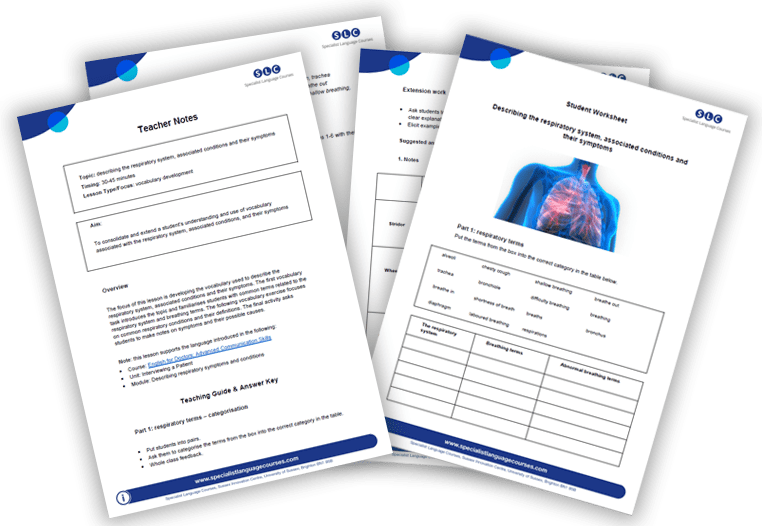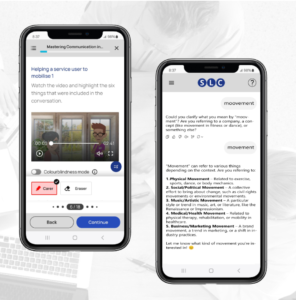
SLC Joins UK Skills Partnership as Associate Member
We are delighted to announce that SLC has joined the UK Skills Partnership as an Associate Member.

SLC recently gave a webinar to a group of Chinese doctors working on research projects on medical academic writing.
We looked at the ‘nuts and bolts’ of writing before seeing how they are used in practice, specifically looking at when writing abstracts and research articles.
This post summarises what we covered in the practice section as well as some areas of grammar highlighted as common to academic writing. It also provides the powerpoint of the whole presentation to download. Part 1 looked at how to construct coherent, well written texts, looking at choice of vocabulary, sentence types, paragraphing and whole text writing.
In medical academic writing, the IMRaD format is commonly used to provide a predictable structure to both abstracts and, in a more elaborated form, research articles.
IMRaD stands for Introduction, Methods, Results and Discussion. In some texts, the writer may use Background instead of Introduction and Conclusions instead of Discussion.
The Introduction starts with a wider perspective, looking at relevant literature for example, before narrowing to the specific topic of the text. The Methods and Results then provide the core of the writing, describing the settings, the processes and the data gained. The discussion then relates the results to the literature and analysis presented in the Introduction.
When writing, it is important to remember to use the language and structure set out in What is Medical Academic Writing Part 1.
An abstract follows the IMRaD format. It stands alone, so does not need the research article it describes to support it. It presents a clearly written summary of an article, so enabling the reader to quickly understand whether they want to read the full article. As part of this, an abstract describes what the research has achieved and why it is important.
The abstract should have a clearly set out question as per the article it describes, the names of the authors and then the key IMRaD sections set out in paragraphs with sub-headings. There should be very few abbreviations, and no illustrations, references or tables.
Typically, the Introduction and the Discussion will be relatively short, while the Methods and Results sections will be longer and contain more detail.
A research article follows the same IMRaD format used in an abstract. Naturally, what was summarised is elaborated on in sufficient detail to show the reader what happened, what the results were and why they are important.
The first part of the article states what the reader should expect to cover. It sets out the broader context of the research by discussing other articles which have been written on the topic. Citations must be used here. Once this has been achieved, then the Introduction narrows to become more specific to the topic set out in the title of the article. Here, it shows how the research will advance knowledge in this area described.
This section describes in detail how the research was carried out. It describes the settings, the methodology used and the implementation of that methodology. It describes the equipment used and where appropriate, the suppliers of that equipment. This is so readers can replicate the research should they want to. The section also describes the problems or possible problems in data collection.
When writing about the Methods, it’s often a good idea to use sub-headings to aid clarity. Research is complex and sub-headings guide the reader through the section, so they are clear on what happened and how.
As with the Methods section, the Results is often lengthy and therefore needs to be carefully structured for the reader to follow easily.
In this section, the data is shown along with an initial analysis of that data. Where there is a lot of data, it’s important to look for ways to present it clearly through tables, graphs and charts, for example. It’s also important to show the relevant data as opposed to all the data. Any data must be clearly captioned and described.
In this section, you may both link back to methods that produced the data and forwards to where the data is analysed and discussed in more detail.
Whereas the Introduction moves from the broader context to the specifics of the article, the Discussion goes in the opposite direction, starting with the results and then widening out to set them in the bigger picture.
This Discussion therefore shows to what extent the results have successfully addressed the question set out and how the findings link to the literature. It may also make recommendations for future research.
In this way, the content in the Discussion is directly related to that in the Introduction.
In Part 1 of What is Medical Academic Writing, we looked at the lexis associated with writing well-constructed texts. However, there are a number of grammatical concepts commonly used in academic writing. We highlight three of them here.
The passive voice is typically used to focus on the process or action in a sentence, not the person or people performing that process or action.
So, for example, rather than write, ‘Our investigators performed quality control using the 835 control probes included in the array’, a more common formulation would be, ‘Quality control was performed using the 835 control probes included in the array’.
Using the passive voice adds more emphasis on the substance of the research rather than the researchers themselves. This is appropriate to scientific writing and gives a more formal, neutral tone to a piece.
A key challenge in academic writing is to use high level, often quite technical, vocabulary without confusing the reader and at the same time remaining concise. It’s important to use unambiguous vocabulary to give a more precise meaning than when using a more general term.
One way of achieving this is to use nominalisation, whereby the writer uses the noun form of a verb in a sentence. Using nominalisation can also help remove personal pronouns in a similar way to using the passive.
So, ‘When we analysed the data, it showed that the genetic material contained a large amount of DNA and very little protein’ becomes ‘The analysis of the genetic material revealed it contained a large amount of DNA and very little protein’.
Hedging is the use of language that reduces the certainty in a statement. It is used to show that data or results may be contingent and therefore change over time.
This may be expressed through an adjective, so ‘It is probable/possible/conceivable/unlikely that..’ or a modal verb, so could, may or might, for example.
In Part 2 of What is Medical Academic Writing we’ve looked at how to use the IMRaD format and some key grammatical points. In Part 1, we looked vocabulary, sentences, paragraphs, discourse markers and text construction.
Together, the two articles and the associated powerpoint cover the fundamentals needed by anyone in healthcare seeking to write effectively, concisely and successfully.
The material in these articles and powerpoint come from SLC’s course, English for Medical Academic Purposes. This course is designed specifically to enable medical students and academics to engage successfully in the international world of medical research and study.
SLC’s ground-breaking online Medical English courses gives you the language you need to work, study and collaborate in an English-speaking environment.
Just click on the course and start your Medical English preparation!
In Specialist Language Courses we offer free lesson plans to teachers so they can have the best materials to teach their students about Medical English.
You can subscribe to our newsletter where you will receive monthly email with the latest materials that SLC offers for free.

We also offer the latest in online medical English resources and materials to transform your teaching programmes and accelerate your students’ learning.
Teachers and institutions use the courses in multiple ways – as digital coursebooks, as supplementary learning, and as part of a flipped classroom approach. We can advise you how to integrate the materials to meet your objectives.
Interested in using our courses? Click here:
Get updates and get the latest materials on Medical English, OET and IELTS

We are delighted to announce that SLC has joined the UK Skills Partnership as an Associate Member.

We’re delighted to have won a grant from Ufi VocTech Trust to develop an AI-driven technology solution that provides cheap phone-based language and communication skills
